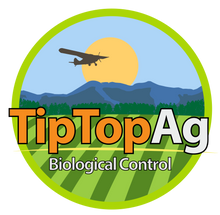Ladybugs are natural predators to aphids, mealybugs, spider mites, thrips, and many other soft-bodied insects.
ABOUT LADYBUGS (HIPPODAMIA CONVERGENS):
Preventative care is key!
Hippodamia convergens, commonly known as native ladybugs, can be found all across the United States. Our pre-fed Ladybugs serve as excellent general predators in various settings such as organic gardens, greenhouses, grow rooms, patios, rooftop gardens, interiorscapes, and any other location where pests are present.
- Allow the Ladybugs to do the work for you. Simply release them in the desired area and witness their ability to eliminate harmful insects that can cause damage to your plants.
- Promote a thriving backyard ecosystem! Experience improvements in the health of your plants without the need for harmful chemical pesticides.
- Enhance your harvest by maximizing plant productivity. Healthy plants tend to yield more.
- Our Ladybugs are natural, organic, sustainable, and safe for kids and pets.
Egg: 2-5 days | Larvae: 21 days | Pupa: 7 days | Adult: 1 year

LIGHT INFESTATION:
Release 1 ladybug per square foot, monthly.
MODERATE INFESTATION:
Release 1 ladybug per square foot, bi-weekly, 2-3 times.
HEAVY INFESTATION:
Release 1 ladybug per square foot, weekly, 2-4 times.
HOW TO RELEASE:
- Release ladybugs in the early morning, evening, or on a cloudy day when the temperatures are cooler.
- Mist leaves to improve ladybug habitat. Misting the foliage beforehand may improve performance. With ample food and moisture, ladybugs can begin to reproduce immediately.
- Release ladybugs at the base of the plants.
- Release multiple times throughout the growing season to stay ahead of the pest lifecycle.

STORAGE:
For best results, store ladybugs in original shipping box between 34-45°F for no longer than two weeks. Refrigerate, do not freeze.
GOOD BUG SUPPLEMENTAL DIET:
Maintaining your growing operation relies on well-fed beneficial insects as your natural defenders. By providing dependable food sources, you enhance their strength and effectiveness.
Our Good Bug Supplemental Diet combines Ephestia, Artemia, and Carpoglyphus lacti - all of which are highly nutritional food sources rich in proteins, lipids, and essential fatty acids.
Packaged on easy-to-use hanging tabs!
PRO TIP:
Invite beneficial native insects into your garden! Our Good Bug Diet consists of a unique blend of fats, proteins, fiber, calcium, phosphorus, sodium, amino acids, vitamins, lactose and sucrose, serving as a valuable food source for these beneficial insects.










